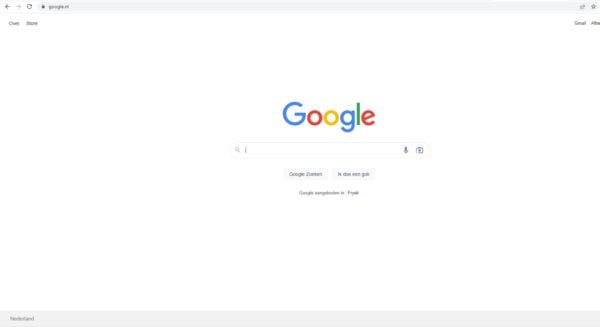Why you should care how green your website is

If you own a website or are thinking of creating one, you should be mindful about your ecological footprint. Because the tech industry plays a big role in the current climate crisis. With its data centers, large manufacturing operations, and huge amounts of e-waste, it’s accountable for nearly 4% of global CO2 emissions. Which, shockingly enough, is similar to the travel industry. And this number is only growing! So, what can you do to make your website greener?
The tech industry’s bad environmental footprint
Nowadays, everyone owns at least one digital device. Most of us own many. And the number continues to rise. According to Cisco’s Annual Internet Report, we will own 29.3 billion networked devices in 2023, which is a ridiculous amount of products that need to be manufactured.
And the factories needed to produce our devices don’t just negatively impact the environment because of their gas emissions. Factors such as land degradation, biodiversity loss, and water consumption also play a role. For example, the industry uses 12,760 liters of water (which is 3,190 gallons) to produce just one smartphone.
The rise of data centers
The story only gets bleaker when we look at data centers. Because the more digital devices we use, the higher our global data traffic will be. In order to keep up with this traffic, new data centers are being built and expanded every year. And though they currently only consume 1% of the world’s electricity, it’s expected that data centers will consume about 20% in 2025. Which isn’t all that strange, if you consider that there are currently 8000 data centers in the world.
It’s time to take action
Climate change is a serious threat. If we don’t want our world to become uninhabitable in a few years, we should take action. Luckily, there are multiple things you can do to improve your website’s carbon footprint. Before you get started, it’s good to check how green your website is now. You can use an online carbon footprint calculator, like Website Carbon Calculator.
Save energy by blocking bad bots
This is a big one. As we mentioned before, bots also spend energy as they crawl your site. And they crawl your site many times a day, and often when there is no need. So many, in fact, that bots make up around 30% of the daily internet traffic!
That’s why you should identify unnecessary bots and block them from your site, so when they request your server, your server won’t answer. You’ll be saving energy. You can block bad bots by blocking the individual or entire range of IPs where the unusual traffic comes from. Or you can use a bot management solution like Cloudflare.
Reduce bot traffic
What about the bots you don’t want to block? It is still useful to reduce their traffic. For example, on any given day, Google crawlers can visit the Yoast website 10,000 times. During these visits, they only crawl 4,500 unique URLs, meaning that a lot of energy gets wasted on crawling duplicate URLs.
And it’s not just Google bots that are visiting us. There are bots from other search engines, digital services, commercial bots, etc. And we don’t want to waste that much energy! That’s why we created the crawl optimization feature, which removes unnecessary URLs, feeds, and assets from your WordPress site. This helps bots crawl your site more efficiently and reduce their visits. In other words: You’re saving energy!
Green host, green website
You can also take control over your website’s carbon footprint by choosing the right hosting provider. Because 48% of the total energy that’s used by the internet (and your website) is used in a data center. So if you choose a hosting provider that actively purchases renewable energy for their data centers, you’ll have far lower carbon emissions.
Don’t be like GameSpot
With all these steps to make your website greener, it’s a surprise that many large companies still have ‘dirty’ sites. Take GameSpot for example, which is a news site about video games. GameSpot produced the most CO2 per visit last year. They also ranked second-to-last for the energy they produce per year, which is more than 550,000 grams of CO2. Meaning: It would take 26 trees an entire year to compensate for the carbon emitted by the GameSpot website.

Example of a green site
Now that we’ve discussed the ‘dirtiest’ site, let’s look at the cleanest and greenest: Google. They only produce 5,480 grams per year. Which isn’t surprising when you consider their net-zero target in 2030. Google’s sustainability efforts range from machine learning to help cool data centers to smart thermostats that conserve home energy. And with their eco-routing in Google Maps, which gives users the route with the lowest carbon footprint, Google has reduced greenhouse gas emissions by more than 500,000 metric tons. Which is the equivalent of getting 100,000 fuel-burning cars off the road.

Final thoughts: Start now!
Our advice? Start now. Because the longer it takes to cut down on greenhouse gas emissions, the more damage we’re doing to our environment. That’s why Yoast introduced the crawl optimization feature. Because we also want to contribute to Google’s net-zero goal. So use our plugin to make your website greener, and do whatever else you can, no matter how small. Because small actions can have a big impact.


“Great post, I really appreciate the focus on sustainable living and the impact it can have on the environment!”
Thank you :) We hope you found it helpful!
Thanks for sharing this so important & useful information about website carbon emissions which affect our environment on earth. With the help of your article link, We have checked our website status for carbon emissions and We found it really helpful to keep our environment clean & green.
That’s great, keep up the good work and thank you for your lovely comment :)
Understanding the level of ‘greenness’ of your website is becoming increasingly important in today’s world. As we continue to focus on sustainability and reducing our carbon footprint, businesses and individuals alike are realizing the importance of minimizing the environmental impact of their online presence. By measuring and improving the green rating of your website, you can not only reduce your carbon emissions but also improve the overall user experience, as greener websites tend to load faster and run more efficiently. In short, prioritizing the ecological sustainability of your website is not only responsible and ethical, but it can also have practical benefits for your business and its online presence.
Hi there! Thanks for your comment! You’re right, it’s a win-win situation that will also benefit your site users :)
great tips. some more tips may be to Use energy-efficient servers and hosting providers that rely on renewable energy sources.
Optimize your website’s design to minimize data usage and reduce load times
Use eco-friendly web development practices like minimizing CSS and JavaScript files, compressing images, and using clean code.
Implement a content delivery network (CDN) to reduce the distance data has to travel, reducing energy usage.
Encourage visitors to adopt green practices by providing tips on how they can reduce their carbon footprint.
Thanks for those additions, Ismail!
Sam,
What an awesome article with practical tips. I appreciate you for sharing your insights.
As the world becomes more aware of the impact of climate change, it’s important to consider the role that technology and the internet play in contributing to global CO2 emissions. With data centers, manufacturing operations, and e-waste, the tech industry is responsible for almost 4% of global CO2 emissions.
But as website owners, we have the power to make a difference. By taking steps to reduce our ecological footprint, we can help mitigate the impact of the tech industry on the environment. One way to do this is by making our websites more eco-friendly.
From using energy-efficient web hosting to optimizing our website code, there are many ways we can reduce our website’s carbon footprint. And not only is this good for the environment, but it can also improve the user experience for our visitors.
By making our websites faster, more efficient, and easier to navigate, we can attract and retain more traffic.
So let’s take a cue from Yoast and start making our websites greener.
Not only will it help protect the planet, but it can also benefit our businesses in the long run.
It’s a win-win for everyone.
And I do care how green my website is.
Thank you so much for your comment, Rina! Great to hear that you agree and want to continue working on making your website greener, lots of luck to you!
Interesting blog , In my opinion is carbon emissions is the main reason.
We would ready to support our green ecosystem.
Thank you for your comment, Rony! We hope this article helps you contribute to a greener web and better environment :)